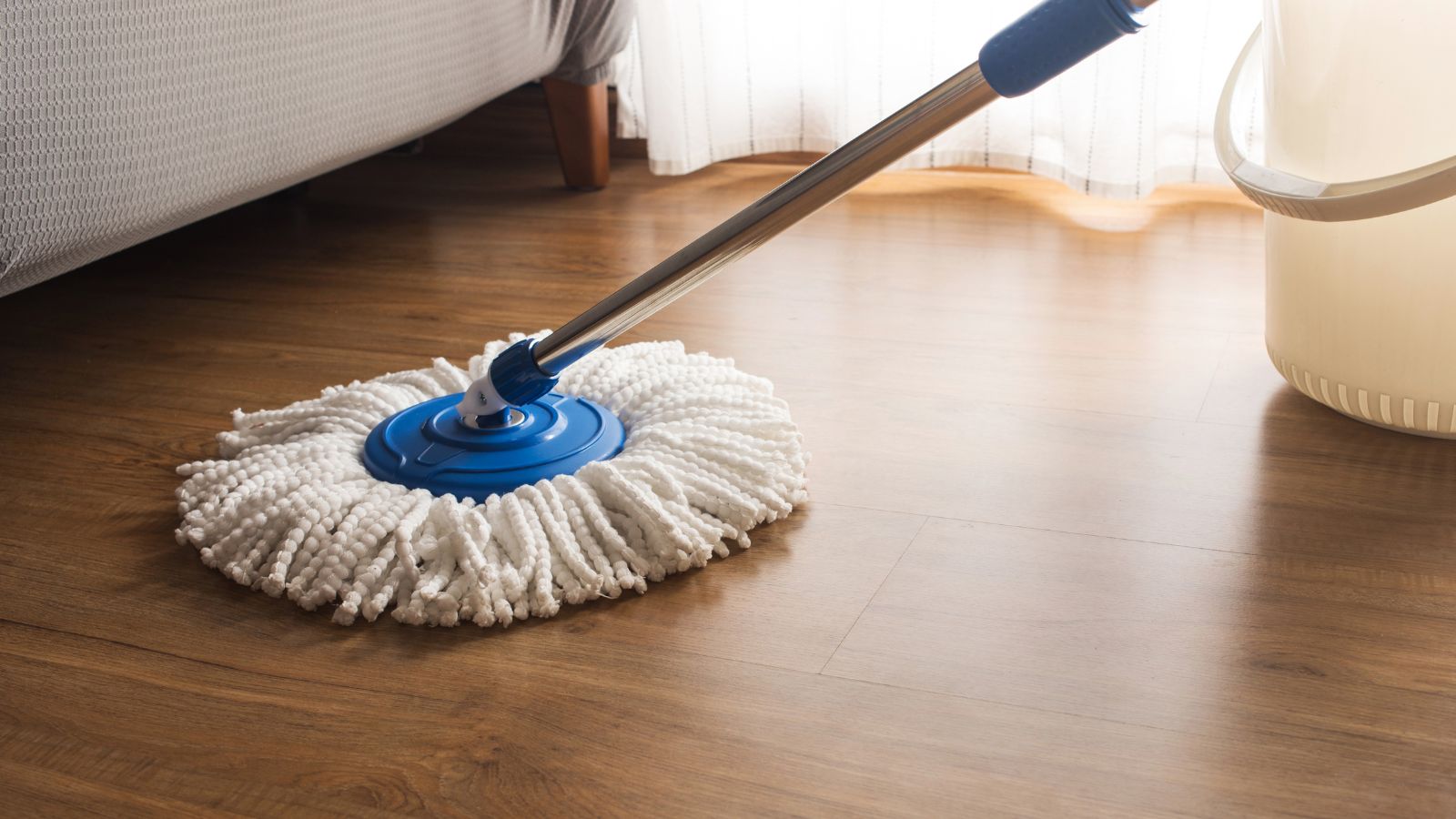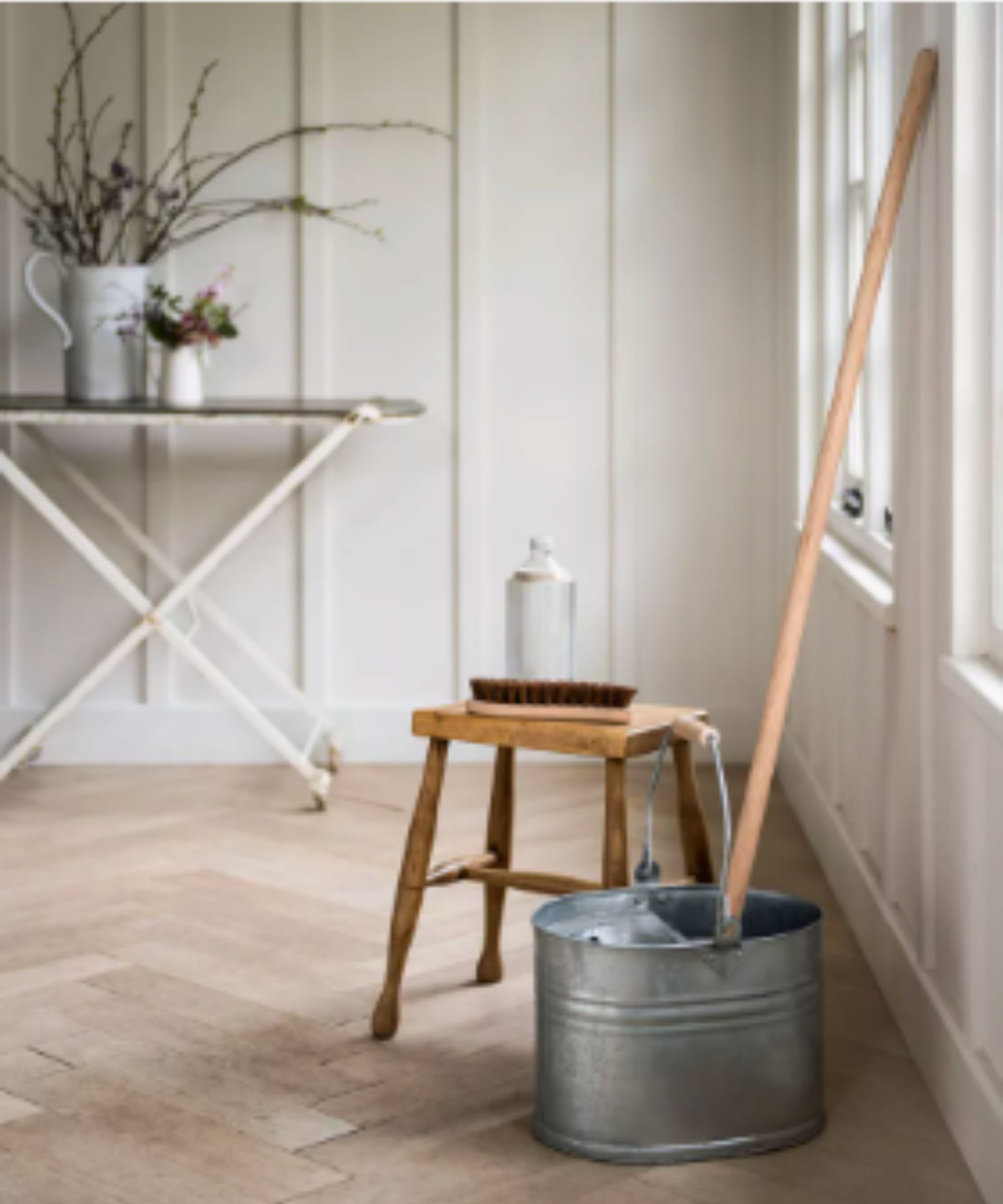
Keeping our floors clean involves regular mopping, but it can be counter-productive if our mops aren't clean themselves. Mops are made of absorbent materials, be it cotton or microfiber, and much of the grime stays within the mop head if they're not cleaned or replaced regularly.
Mop heads can also diminish over time after repeated scrubbing across our floors, so they will eventually need replacing. So, whether you're exploring how to mop floors the right way, or mopping vs wet vacuuming, it's important to know how often to replace mop heads and to get into the habit of keeping them at their best.
We spoke with flooring experts and professional cleaners for the full low-down on how often to replace mop heads, and how to clean them properly to improve their longevity.
How often should you replace them?
'While you may practice cleanliness by regularly mopping your floors, cleaning or replacing the mop head is crucial,' says Liam Cleverdon, flooring expert at Flooring King. Mops are so effective because they're absorbent, but this means that much of the dirt and bacteria you're mopping up will stay with the mop head.
'This cleaning tool absorbs the germs and dirt from the floors, with its moist environment a breeding ground for bacteria. Mopping with a dirty head doesn’t actually clean your floors and can spread bacteria across the surface,' he adds.
So, it's important to replace your mop head regularly. However, different mop types require replacing at different intervals – and it also depends on how often you use yours. Manufacturers will claim mops should be emptied every two to three months, for example, but this ignores how much use they're getting.

Brian Davis, cleaning expert and CEO of Handyrubbish, puts it simply: 'Change the mop head every 2–3 months for most traditional and string mops that get weekly use,' adding that this could vary depending on what you're cleaning. 'If you're taking on extremely dirty or high-traffic areas, this might be every 1–2 months.'
'Microfiber mop heads, such as these mop pads from QVC, are stronger and more withstanding,' explains Daniel Anderson, cleaning expert from Gorubbishgo. 'You can replace them after 3-6 months, but remember that they need washing quite often in order not to grow bacteria.'
Steam mops, such as the Shark Steam & Scrub Steam Mop, available at QVC, work differently. The high heat helps to eliminate bacteria and even sanitize the mop head during use, but the heat can also affect the mop's integrity.
'The replaceable microfiber pads on steam mops should be changed every 15-20 uses, or when you realize that they don't pick up the dirt like they used to,' advises Brian. 'The high heat coming from the steam mop is able to break down fibers faster than usual, so watch the wear on performance well.'
And finally, when it comes to vacuum mops, such as the iRobot Roomba Combo Robot Vacuum and Mop available at QVC, it will depend on the manufacturer's guidance. Usually, you'll be able to tell when the brushroll needs replacing (it won't work as effectively or there'll be noticeable odors and signs of wear), but it's best to check with what they advise.
See brands like Bissell, Tineco, Kärcher, Shark, Dyson and Dreame for more info.
You can browse replacement mop heads of all types from our retailer quick list:
- Shop mop heads at Amazon
- Shop mop heads at Home Depot
- Shop mop heads at Walmart
- Shop mop heads at QVC
- Shop mop heads at Bed Bath and Beyond
How can you make them last longer?
'Proper care and maintenance extend mop head life,' notes Austin Jones, professional cleaner and CEO of Millenium Facility Services. 'Rinsing mop heads after each use removes built-up dirt and chemicals. Allowing them to air dry completely prevents mildew growth.'
Or, to maintain your mop heads to the fullest, get into the habit of deep cleaning your mop head after every use, as per Liam's advice:
'To keep your home safe from germs and to ensure clean floors, regularly clean the mop head. If it’s a removable head, place it in the washing machine to ensure a thorough cleanse.'
'Alternatively, fill the sink with soapy warm water, using dish soap as your cleaning solution, and remove the dirt by working into the mop head with your hands. Rinse, wring out any residue, and leave to dry before your next use.'
Don't forget to rinse and clean the bucket after every use, too.
For more floor cleaning tips and tricks, professional cleaners advise in our separate feature, the best ways to mop hardwood floors.







